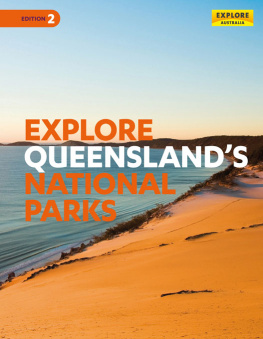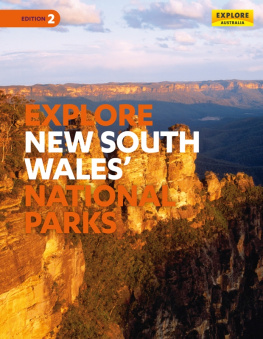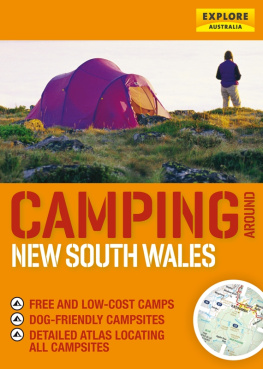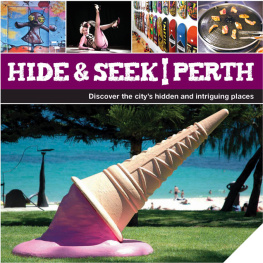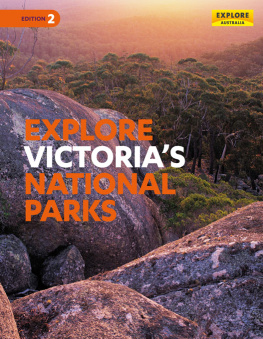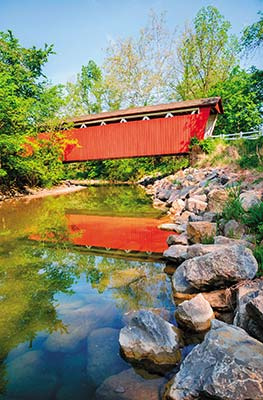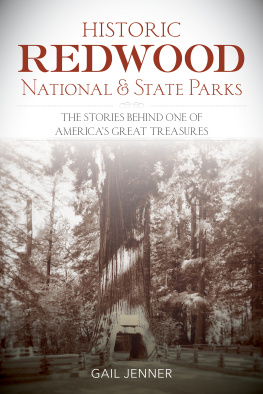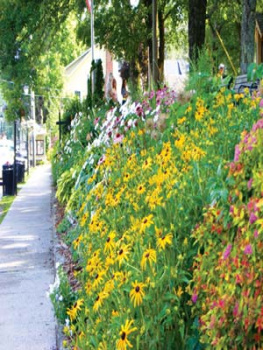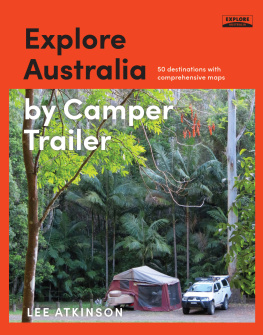CONTENTS
FEATURE PARKS
OTHER PARKS
QUEENSLAND
In 1908 the Witches Falls section of Tamborine National Park was gazetted as the state's first national park. Today, parks and reserves account for just over 5 per cent of the state's 1 727 200 square kilometres. The vast majority of that area is taken up by national parks. Palms National Park is a mere 73 hectares, with only 12.4 of those open to visitors; the vast MungaThirri National Park in the Simpson Desert covers a massive 1 million hectares. Their names tell a tale of extraordinarily diverse landscapes: from ancient rainforests to harsh deserts, from rugged mountains to stunningly beautiful coastal scenery. Together the parks protect Aboriginal rock art, cascading waterfalls, mighty rivers and wetlands, and remote wilderness, and provide habitats for some of Australia's rare and endangered plants and animals.
Queensland boasts five of Australia's 19 World Heritage areas, including the Great Barrier Reef, the fossil site at Riversleigh in Boodjamulla (Lawn Hill) National Park, the Wet Tropics World Heritage Area, the Gondwana Rainforests and Fraser Island.
 | Department of National Parks, Recreation, Sport and Racing (NPRSR) 13 7468
Department of Environment and Heritage Protection (EHP) 13 7468
Department of Agriculture, Fisheries and Forestry (DAFF) 13 7468 |
| www.nprsr.qld.gov.au |
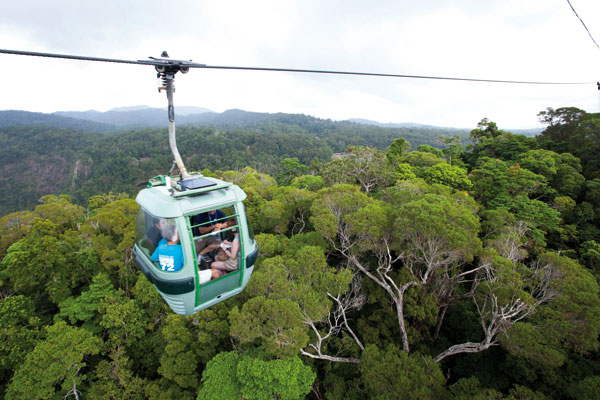
One of the best ways to experience Barron Gorge is to soar above the trees
PARK INFORMATION
NPRSR 13 7468
SIZE
2820 ha
LOCATION
1404 km north-west of Brisbane; 18 km north-west of Cairns
PERMITS
Camping permit and fees apply for Speewah Conservation Park; bookings essential
ACCESS
From Cairns to Kuranda then via Barron Falls Rd; from Kuranda, Freshwater or Cairns via rail; from Kuranda or Smithfield via cableway
BEST SEASON
All year; but hot and wet in summer
VISITOR INFORMATION
Cairns (07) 4051 3588, 1800 093 300 | Kuranda (07) 4093 9311, 0407 758 645 | www.cainsgreatbarrierreef.org.au
MUST SEE, MUST DO
GET a bird's-eye view of the rainforest from the dizzy heights of the Skyrail Rainforest Cableway
SEE the mural at Barron Gorge Lookout depicting the park's wildlife
RIDE the rapids of the Barron River in a whitewater raft
One of the state's most popular places, Barron Gorge National Park offers lush tropical rainforest in a rugged mountain setting of steep ravines and picturesque waterfalls right on the doorstep of north Queensland's capital of Cairns. Part of the Wet Tropics World Heritage Area, the magnificent rainforest-clad mountain scenery can be viewed from the train, cable car or walking trail.
Aboriginal culture
The Djabugandgi Bama (Djabugay people) are the traditional owners of the Djirri Nyundu Nyrrumba area, which includes Barron Gorge National Park. The Djabugay people believe that all the rivers and creeks in the national park were created by the carpet snake ancestor Budaadji. In 2004 the Federal Court of Australia recognised the Djabugay peoples native title over the land, and a formal Indigenous Land Use Agreement exists to align the parks cultural importance with the states conservation efforts.
A look at the past
Gold and tin mining in the 1870s first attracted European pioneers to the Atherton Tableland. The Douglas and Smiths tracks were established in 1876, based on trails forged by the local Djabugay people. These tracks were the first pack routes linking the hinterland goldfields to the coast and the port of Cairns and still traverse the park today. In the 1880s timber cutters moved into the area, logging the beautiful red cedar trees and using the Barron River as a means of transportation.
The CairnsKuranda Scenic Railway, built between 1887 and 1891, has a heritage-listed section through the park, rising to 328 metres and with 15 tunnels, 93 curves and 37 bridges. It took hundreds of men, working mainly by hand, to complete a 24-kilometre section of railway through the almost impenetrable rainforest, and several workers lives were lost during this difficult task. The park is also home to the oldest underground hydro-electric power station in Australia, built in 1935 to harness the power of the Barron River.
The national park was declared in 1940 and in 1988 it received its listing as part of the Wet Tropics World Heritage Area. The Skyrail Rainforest Cableway was completed in 1995.
Natural features
The national park encloses a wild river valley that plunges steeply down the side of the Atherton Tableland towards the coastal plain north of Cairns. The stunning Barron Gorge, carved by the Barron River, has created a truly spectacular landscape in the mountainous terrain. The falls are located at the top of the gorge, around 5 kilometres from the hillside town of Kuranda. As a result of its use to create hydro-electric power, the once-powerful falls, over 250 metres high, now flow only after a release of water or after flooding rain.
Native plants
This park protects the most accessible tropical rainforest close to Cairns, along with vegetation of mountain heath, grasslands and open woodlands featuring groves of she-oaks. If bushwalking, take care not to touch the large heart-shaped leaves of the giant stinging tree, which inflict lingering and severe pain on contact.
Wildlife
The rich diversity of wildlife includes possums, flying-foxes, bats, platypus and echidnas. Lesser-known species include the leaf-eating, Lumholtz's tree-kangaroo, the tiny musky rat-kangaroo, which forages in the leaf litter for seeds and nuts, and the carnivorous spotted-tailed quoll. Here too resides Australia's longest snake, the amethystine python, which can grow up to 8.5 metres in length and can feed on animals as large as a wallaby. The vibrant green, 14-centimetre giant tree frog, Australia's largest, is easily distinguished by the white stripe along its lower lip. Birdlife is abundant listen for the distinctive 'wallock-a-woo' call of the wompoo pigeon and the low, booming note of the large flightless southern cassowary (see feature, ).
Camping and accommodation
Camping is not permitted in the national park, but there is a campground in the adjacent Speewah Conservation Park, a 15.2 ha parcel of land whose sole purpose is to provide a camping area and function as the trailhead for all the main walks in Barron Gorge National Park. The Speewah site has modest facilities, but visitors must bring all supplies and water with them. Nearby Cairns has accommodation for a broad range of budgets and tastes, while Kuranda offers more low-key and charming B&B accommodation.
Things to do
The main natural feature of the park, Barron Gorge, can be explored by scenic railway, cable car or by foot along one of the numerous walking trails. Barron Falls Lookout offers a wheelchair-accessible, elevated boardwalk (300 metres return), and Wrights Lookout has great views over the gorge.
BUSHWALKING The walking tracks in the park range from easy strolls to challenging treks. Barron Falls Lookout T rack (1.1 km, 20 minutes, easy) leads to an informative mural depicting the park's wildlife. The historic

